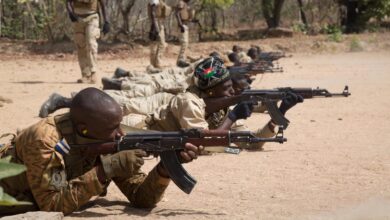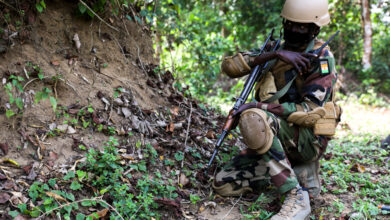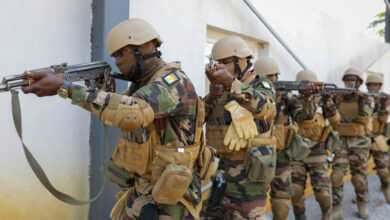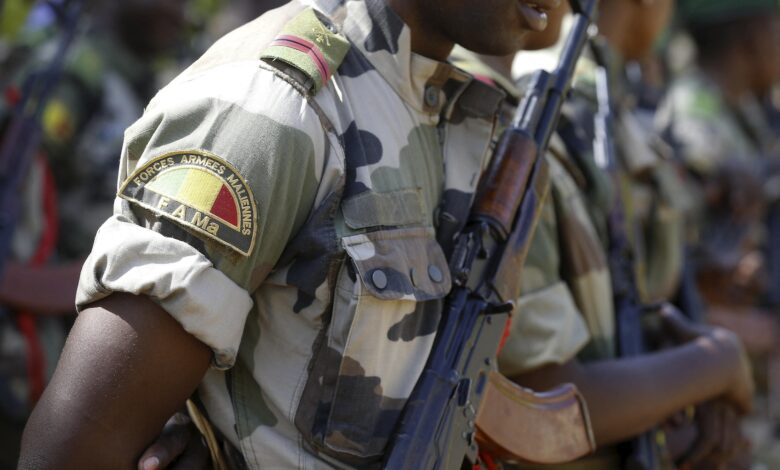
The attack on Mali’s capital Bamako by Jama’at Nasr al-Islam wal Muslimin (JNIM) marks a sobering milestone in the African country’s ongoing security crisis.
For the first time since 2015, terrorists managed to strike the heart of the capital, challenging the already fragile stability of the region.
How the Attack Unfolded
Over the past two and a half years, JNIM has been noted as creeping closer to Bamako, indicating that the capital’s relative safety from terrorist violence was unlikely to last forever.
Soon after the sound of gunshots and explosions began echoing through the city on the morning of September 17, it was clear that terrorists had reached Bamako. These sounds marked the beginning of an hours-long JNIM assault on the Malian capital — one of the al-Qaeda affiliate’s most audacious and successful attacks to date.
Two locations were attacked almost simultaneously, with clashes first reported at a gendarmerie training school in Faladié. Fighting at the school, which lasted for over three hours, led to a majority of the purported 70 casualties.
A second group of fighters attacked Air Base 101, a government and military facility located on the southern perimeter of the civilian Modibo Keita International Airport in Sénou. Fighting lasted far longer at this base, and while JNIM killed far fewer security forces there, its fighters inflicted significant damage on buildings and planes.
Among the jets confirmed to have been damaged was the government’s Boeing 737, reported to have recently been used by leader Assimi Goïta, in addition to an aircraft used by the World Food Programme and one belonging to Sky Mali.
The images and footage of JNIM fighters freely wandering beside airplanes, as well as inside one of the country’s most strategically important sites, have served as compelling propaganda for the group.
By nightfall, the Malian military had repelled the attack and regained full control of the city. Malian authorities have not yet reported a casualty figure, admitting only that there had been “some” deaths, nor have they confirmed any of the speculated loss of aircraft.
JNIM, known to inflate its claims, reported having killed or wounded over 100 Malian and Russian military personnel, destroyed six military aircraft (including a drone), and disabled several others.
In final statement on Bamako attack, Al-Qaeda in Sahel (JNIM) claims go have killed and wounded over 100 of soldiers, destroyed 6 military aircraft including a drone, while partially disabling four. In addition dozens of military vehicles were burnt along other equipment #Mali https://t.co/9jtF7h8Vdt pic.twitter.com/jcJceC803E
— Paweł Wójcik (@SaladinAlDronni) September 17, 2024
The Attack’s Unique Dimensions
The attack on two such symbolic military sites sent a message to President Goïta. The assault on his former military base and images of a JNIM fighter setting fire to one of his planes underscore that the group has both the capability and desire to strike at Mali’s center of power.
Moreover, strictly attacking military targets, JNIM has again tried to differentiate itself from the junta, which it frequently accuses of killing civilians.
It is also telling that such a large-scale, coordinated attack was successful despite not targeting softer civilian targets.
JNIM’s success says much about the Malian security apparatus’ deficiencies, yet it equally reflects the group’s offensive capabilities, which have grown immeasurably over the past decade. JNIM’s evolution as a fighting force will undoubtedly continue further, much to the detriment of governments and militaries in the region.
Perhaps the most intriguing aspect was revealed following the attack when JNIM reported that the operation was conducted by two teams of inghimasi (suicide fighters) from the sub-group Katiba Macina.
Salman al-Bambari, an ethnic Bambara of Bamako’s main ethnic group, headed the first unit that struck the gendarmerie school. Abdul Salam al-Fulani, an ethnic Fulani, one of the most prominent ethnic groups in West Africa, targeted the airport.
Fulani involvement in this attack would not alarm a Bamako resident or a government official, for the ethnic group is often associated with jihadists across the region. Yet footage of al-Bambari’s pre-attack vows being recited in Bambara is far more unprecedented.
This footage of the two commanders is an implicit decision by JNIM to underscore their trans-ethnic makeup, as well as demonstrate that their message can resonate with individuals from any background.
JNIM and Goïta’s Junta: Two Contrasting Fortunes
The attack in Bamako is yet another recent high-profile victory JNIM has been able to claim in Mali, with the group participating in the humiliating defeat of Malian and Russian troops in Tinzaouaten close to the border with Algeria toward the end of July.
While JNIM continues to enjoy great success in Mali, the Goïta administration is facing its most challenging period yet. Despite a range of threats confronting the junta, it is its recent inaction that has arguably done the most to undermine its hold on power.
The fatal defeat at the hands of JNIM and The Permanent Strategic Framework for Peace, Security, and Development (CSP-PSD) in Tinzaouaten came largely as a result of the junta’s underestimation of the resources and manpower required to reestablish control over the area.
The defeat was a significant blow to the junta’s credibility, both domestically and internationally.
Evidence suggests that Goïta has sent another column from Gao to Kidal, from where it is anticipated to eventually head northward toward Tinzaouaten, with last week’s attack further raising the stakes for the military’s operations in northern Mali.
The importance of reclaiming the country’s north is often noted as being underappreciated by those in the West. However, how the junta has focused attention, personnel, and material on military operations against the CSP-DPA in northern Mali has come at a hefty price, with its heavy focus here playing a part in JNIM’s recent successes — including the attack on Bamako.
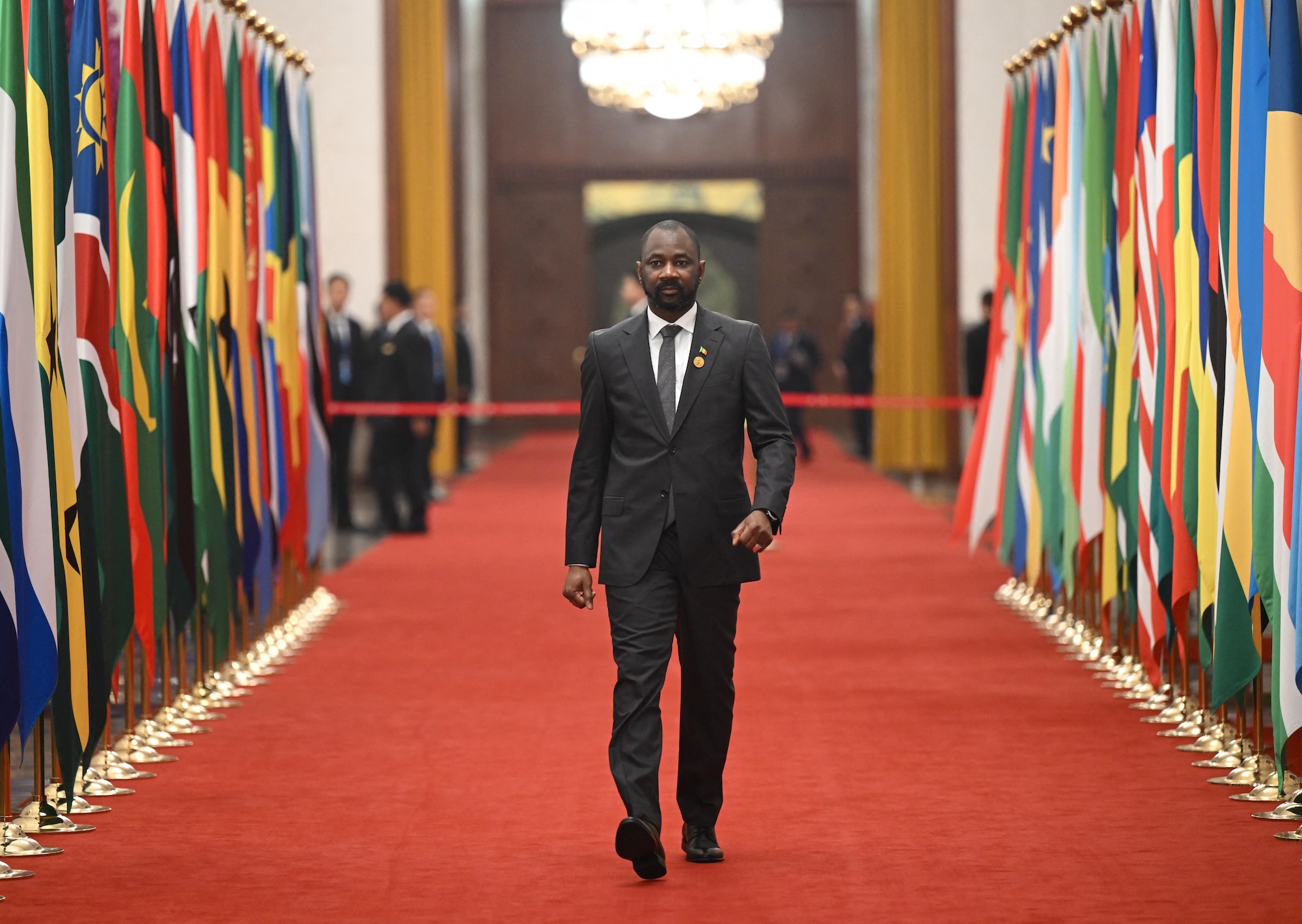
What Lies Ahead for Mali?
Tough decisions now lie ahead for the political leadership in Bamako.
Another major misstep could prove to be a fatal blow for Goïta, placing even more pressure on the success of Malian and Russian forces should they continue their touted northern incursion toward Tinzaouaten.
Yet a potential victory there will do little to solve the junta’s more existential threat of JNIM. Having now expanded and entrenched itself in the Koulikoro Region surrounding Bamako, the al-Qaeda affiliate will be difficult to displace, particularly if the government continues to deploy the same ineffective counterterrorism measures.
The attack on Bamako symbolizes the past failures of the Malian political leadership in combatting the violent extremist groups present inside its borders.
Unfortunately for the junta, this attack is likely also a look into the future. JNIM is likely to continue encroaching on the territory surrounding Bamako, gradually applying pressure on the capital via similar violent incursions, as well as through attacks on major roads leading to the city.
While the Malian government likely has the capacity to better defend the capital, doing so may come at the cost of protecting other strategically important locations in the country.
JNIM’s growing presence in southern Mali not only endangers Bamako and other major cities and towns, but also Mali’s gold mines, which are overwhelmingly found in the southern regions of Sikasso, Koulikoro, and Kayes.
The junta must now carefully balance these competing aims, for the loss of a town, city, gold mine, or other valuable sites could be the catalyst for yet another regime change.
 Charlie Werb is an analyst, writer, and commentator focussing on sub-Saharan African security issues, with a particular emphasis on Islamist extremist groups in the region.
Charlie Werb is an analyst, writer, and commentator focussing on sub-Saharan African security issues, with a particular emphasis on Islamist extremist groups in the region.
The views and opinions expressed here are those of the author and do not necessarily reflect the editorial position of The Defense Post.
The Defense Post aims to publish a wide range of high-quality opinion and analysis from a diverse array of people – do you want to send us yours? Click here to submit an op-ed.




